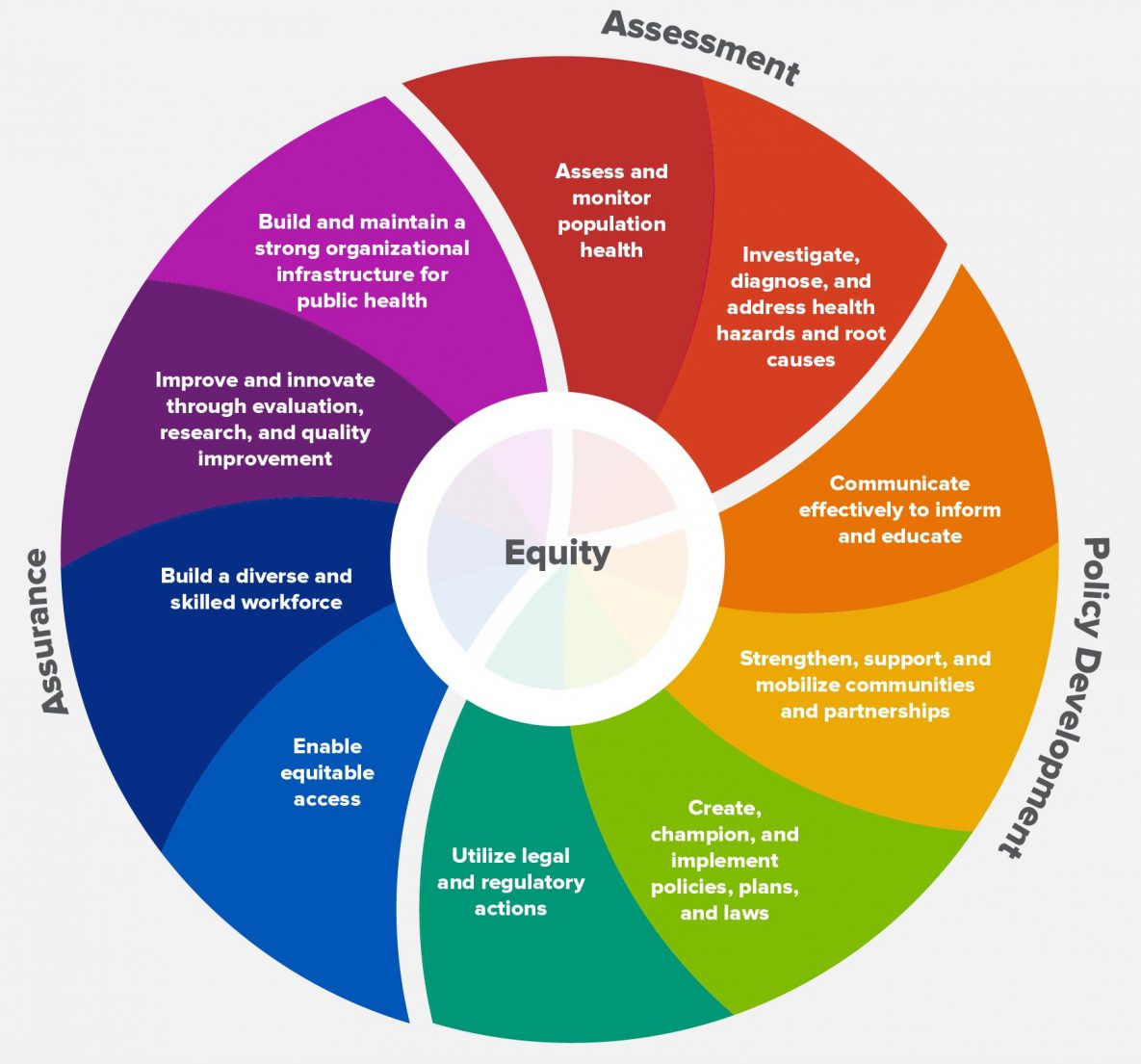Transportation and Public Health
A focus on community well-being through improved mobility

As defined by the American Public Health Association, “Public health promotes and protects the health of people and the communities where they live, learn, work, and play.” Public health can be understood as focusing on the promoting the health of a community or of the general population, not just those who are currently dealing with an illness or disease. In this definition, it is clear that the realm of public health reaches far broader than just health care services.
How is public health managed?
The network of organizations that make up the public health system is defined by the Centers for Disease Control and Prevention (CDC) as “all public, private, and voluntary entities that contribute to the delivery of essential public health services.” The CDC identified 10 essential public health services that are used as frameworks for public health priorities, initiatives, and programs:
- Monitor health status to identify and solve community health problems
- Diagnose and investigate health problems and health hazards in the community
- Inform, educate, and empower people about health issues
- Mobilize community partnerships and action to identify and solve health problems
- Develop policies and plans that support individual and community health efforts
- Enforce laws and regulations that protect health and ensure safety
- Link people to needed personal health services and assure the provision of health care when otherwise unavailable
- Assure competent public and personal health care workforce
- Evaluate effectiveness, accessibility, and quality of personal and population-based health services
- Research for new insights and innovative solutions to health problems

How does transportation intersect with public health?
Transportation and public health intersect on the community level in many activities. These activities include, but are not limited to, the following:
- Ensure individuals who do not drive can remain active in their communities
- Supporting active transportation, including safe walking/biking routes to schools
- Ensuring people have access to health-promoting recreation opportunities
- Ensuring people can choose safe neighborhoods to live in and still have access to essential destinations
Partnerships between transportation and public health
Potential partners in the public health space can include state and local public health departments, local, state, and national non-profits focused on public health, urban and community planners, and others interested in community health, well-being, and safety. In addition, it is important to note that public health often coordinates with health care entities to support and expand their work; therefore, NCMM encourages coordination between the two sub-sectors of health.
For further investigation . . .
Healthy Built Environment Linkages Toolkit
This Toolkit is intended to support the inclusion of health considerations within community planning and design. It is designed as a quick reference to the body of research evidence which describes how our built environment can influence population health.
Scoping Assessment of Transport Design Targets to Improve Public Mental Health
This assessment aims to identify potential research and innovation targets to better leverage transportation design for mental health promotion.
Additional resources
Piecing Together the Puzzle: Mobility as a Service from the User and Service
This discussion paper has attempted to utilise findings from the user perspective, in an interplay with (mainly) the service perspective,
Mobilizing Transit and Public Health Partnerships for COVID-19 Vaccinations – NCDOT Practical Example
The Mobilizing Transit and Public Health Partnerships for COVID-19 Vaccinations series has provided examples from around the country of practical
NCMM – Cross Sharing and Cross Partnership Funding Models
In this brief, NCMM has researched and sourced national examples that support the ability of transit agencies, human service and
NCMM – Framework to Develop a Continuum of Mobility Services
This NCMM information brief can help mobility management professionals identify potential transportation services that can be included in a continuum
Mobilizing transit and public health partnerships for COVID-19 vaccinations: Practical Examples, Part 1
Mobilizing Transit and Public Health Partnerships for COVID-19 Vaccinations: Practical Examples – Part 1 NCMM hosted this webinar to
Oklahoma City Metro Area
Functions:Trip InformationTrip Payment Subfunctions:Itinerary Planning (web)Real Time Information (web) Applicable Grants:None Description: EMBARK, which serves the Oklahoma City metro area,
